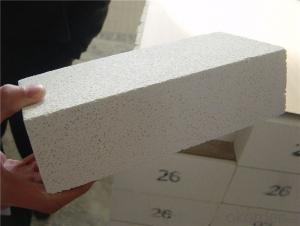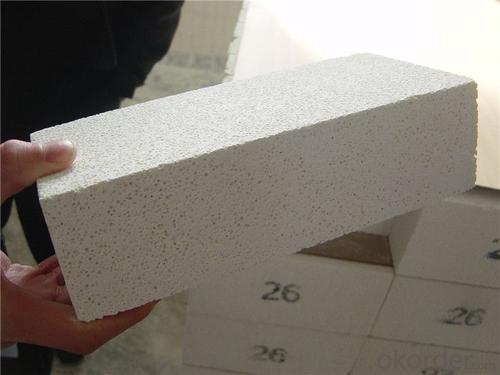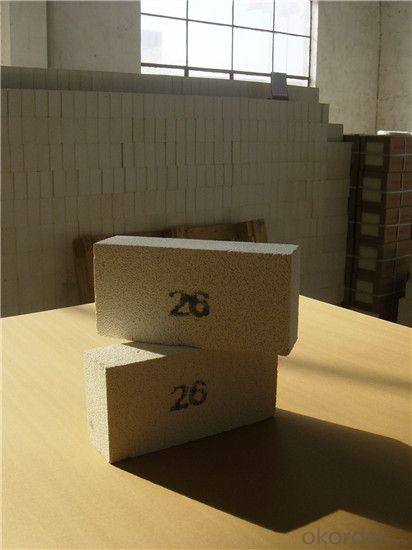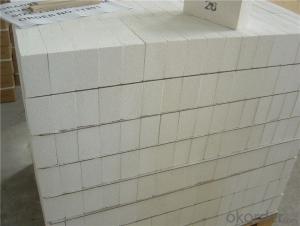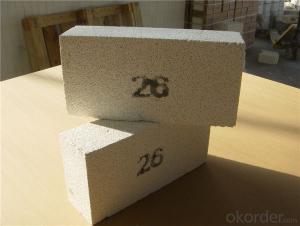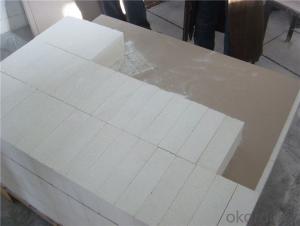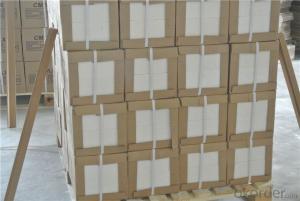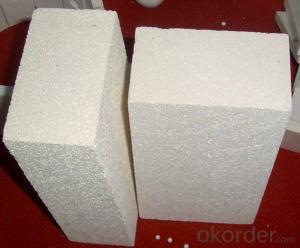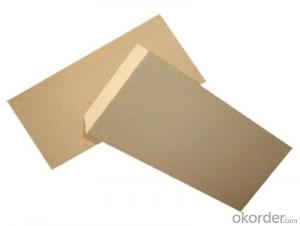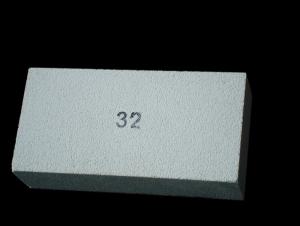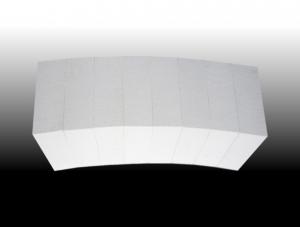Insulating Fire Brick - GJM 28 Light Dense Mullite Insulation Brick
- Loading Port:
- Shanghai
- Payment Terms:
- TT OR LC
- Min Order Qty:
- 1 m.t.
- Supply Capability:
- 10000 m.t./month
OKorder Service Pledge
OKorder Financial Service
You Might Also Like
Thermal Insulation Fire Clay Brick
Refractory brick is a refractory material used in lining furnaces, kilns, fireboxes, and fireplaces.
We provide high quality Refractory Fire Bricks that are used on wide range in the various industries like Cement, Glass and Steel. Refractory Fire Bricks are provided as per the quantity and specifications required by the customers. We provide an extensive range of Refractory Fire Bricks at reasonable prices that depend upon the quantity ordered.
Application
Insulating Fire Brick are used for the lining of converter, alternating current arc furnace, direct Current arc furnace and the ladle slag line, etc.
Company Advantage
(1)Long Insulating Fire Brick manufacture history: 25 years manufacturer
(2)Advanced equipment and good service
(3)Diversification of production standards: ISO ANSI FEPA JIS ASTM
(4)Flexible payment: T/T L/C D/P D/A
(5)Professional marketing team and after-sale service
Insulating Fire Brick main feature:
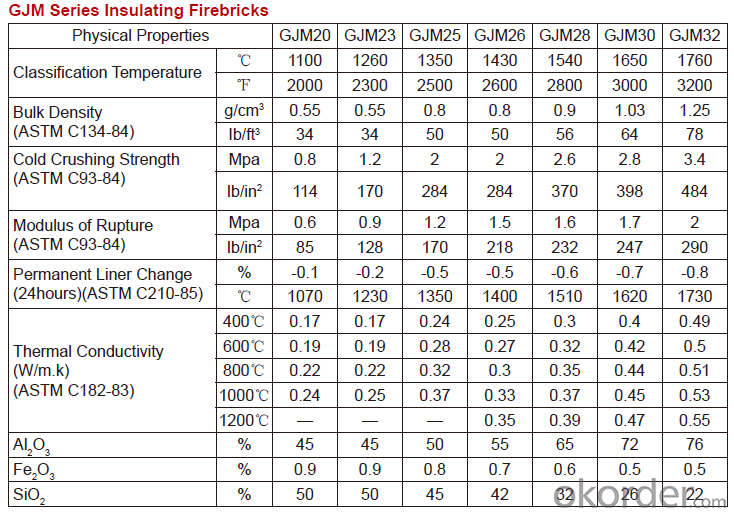
Equipment
1 unit of Ceramic Abrasive (SG Abrasive) pilot production line
2 units of Compact grain Abrasive pilot production lines
1 unit of high-end coated abrasives (abrasive cloth) production line
3 large flexible crushing and sieving lines for grit production lines
6 units of 5000KVA-10000KVA dumping type electric arc furnaces for Brown Fused Alumina fusion
FAQs
Q1 What’s the transport method?
A1 FCL delivery goods with wooden pallet or wooden case by sea; If LCL delivery, must with wooden case; Sometimes need open top, flat rack or bulk cargo.
Q2 What’s the required payment term?
A2 Generally 30% TT as the prepayment, 70% TT before delivery. If need, 100% Irrevocable Letter of Credit or negotiation.
Q3 Which country are our products exported to?
A3 Apart from entire Chinese market, the US, Russia, Japan, Korea, Australia and some Southeast Asian Nations.
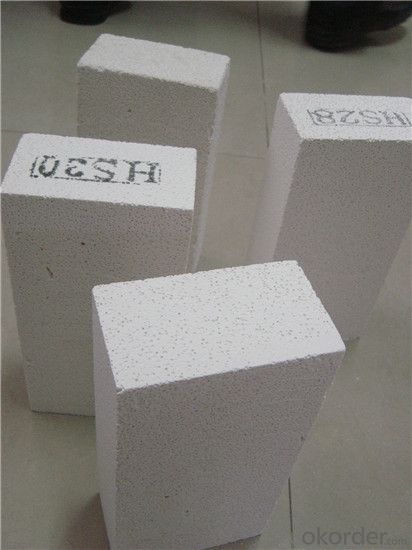

- Q: Can insulating fire bricks be used in the construction of heat shields?
- Certainly, heat shields can indeed be constructed using insulating fire bricks. These bricks are specifically designed to withstand elevated temperatures and possess exceptional thermal insulation properties. Their ability to effectively absorb and distribute heat makes them an ideal choice for the creation of heat shields, which serve to safeguard against excessive heat and mitigate thermal damage. In industries that involve high temperatures, such as steel, glass, and ceramics, insulating fire bricks are frequently employed. Moreover, their lightweight nature and ease of handling make them a practical option for constructing portable or easily installable heat shields. In summary, insulating fire bricks are a reliable and appropriate material for constructing heat shields in a diverse range of applications.
- Q: Are insulating fire bricks resistant to abrasion or erosion?
- Yes, insulating fire bricks are resistant to both abrasion and erosion.
- Q: Can insulating fire bricks be used for insulation in chemical plants?
- Indeed, insulation in chemical plants can be achieved with the utilization of insulating fire bricks. These bricks are crafted from lightweight materials possessing exceptional insulating characteristics, such as ceramic fibers or refractory materials. Their composition renders them capable of enduring elevated temperatures, thus rendering them suitable for deployment in environments where chemical procedures generate heat. Within chemical plants, insulating fire bricks can be employed in a multitude of applications, including the lining of furnaces, reactors, kilns, and other equipment. By virtue of their remarkable insulating properties, they aid in minimizing heat loss, conserving energy, and maintaining optimal operating temperatures, thereby ensuring the utmost efficiency and safety in the chemical processes.
- Q: Can insulating fire bricks be used in the construction of fireplaces?
- Yes, insulating fire bricks can be used in the construction of fireplaces. Insulating fire bricks are designed to withstand high temperatures, making them an ideal choice for lining the interior of a fireplace. They have excellent thermal insulation properties, helping to retain heat within the fireplace and prevent excessive heat transfer to the surrounding structure. This not only improves the efficiency of the fireplace but also reduces the risk of damage to the surrounding walls. Insulating fire bricks are lightweight and easy to handle, making them convenient for construction purposes. Additionally, they are resistant to thermal shock, meaning they can withstand rapid temperature changes without cracking or breaking. Overall, insulating fire bricks are a reliable and effective choice for constructing fireplaces.
- Q: Are insulating fire bricks resistant to ammonia gas?
- Insulating fire bricks are generally not resistant to ammonia gas. While these bricks are designed to withstand high temperatures and provide thermal insulation, they are typically made from lightweight refractory materials such as clay or silica, which are not highly resistant to corrosive substances like ammonia gas. Ammonia gas can react with these materials and cause degradation or damage to the bricks over time. Therefore, if you need to use fire bricks in an environment with ammonia gas, it is recommended to choose specially designed acid-resistant or chemical-resistant bricks that can withstand the corrosive effects of ammonia gas.
- Q: Are insulating fire bricks suitable for the insulation of chimneys?
- Insulating fire bricks are indeed suitable for chimney insulation. Specifically engineered to endure high temperatures and deliver efficient insulation, these bricks are perfect for chimney applications. With their elevated thermal conductivity, they retain heat effectively, thereby enhancing the chimney's efficiency by preventing heat from escaping. Moreover, insulating fire bricks possess resistance to thermal shock, enabling them to endure abrupt temperature fluctuations without experiencing cracks or breakage. This resilience is particularly vital in chimneys, where the temperature can vary significantly during the combustion process. All in all, insulating fire bricks are a dependable option for chimney insulation due to their remarkable heat retention capabilities and durability.
- Q: Can insulating fire bricks be used in ceramic kilns?
- Yes, insulating fire bricks can be used in ceramic kilns. These bricks are designed to have high insulating properties, making them ideal for maintaining heat within the kiln. They are lightweight and can withstand high temperatures, making them a suitable choice for ceramic kilns.
- Q: Do insulating fire bricks require any special firebrick mortar for installation?
- Yes, insulating fire bricks do require a special firebrick mortar for installation. These bricks have a lower density and higher insulating properties, so using a regular mortar can compromise their performance. It is recommended to use a specialized firebrick mortar that can withstand high temperatures and bond effectively with the insulating fire bricks to ensure a proper and durable installation.
- Q: Can insulating fire bricks be used in cement kilns?
- Yes, insulating fire bricks can be used in cement kilns. These bricks have high thermal insulation properties, which help in reducing heat loss and increasing energy efficiency in the kiln. Additionally, they can withstand high temperatures and provide effective insulation, making them suitable for use in cement kilns.
- Q: Do insulating fire bricks require any curing before use?
- Indeed, curing is necessary for insulating fire bricks prior to their usage. Curing refers to the procedure of drying and toughening the bricks in order to guarantee their resilience against high temperatures, preventing any potential cracking or breaking. To accomplish this, the temperature needs to be elevated gradually over a specific duration, usually commencing with a gentle heat and slowly escalating it throughout several hours. Curing is pivotal as it aids in eliminating any moisture or volatile substances that may exist within the bricks, which, if left untreated, could lead to cracking or even explosion when exposed to elevated temperatures. To ensure the correct installation and longevity of the fire bricks, it is crucial to adhere to the manufacturer's guidelines regarding the curing process.
Send your message to us
Insulating Fire Brick - GJM 28 Light Dense Mullite Insulation Brick
- Loading Port:
- Shanghai
- Payment Terms:
- TT OR LC
- Min Order Qty:
- 1 m.t.
- Supply Capability:
- 10000 m.t./month
OKorder Service Pledge
OKorder Financial Service
Similar products
Hot products
Hot Searches
Related keywords
